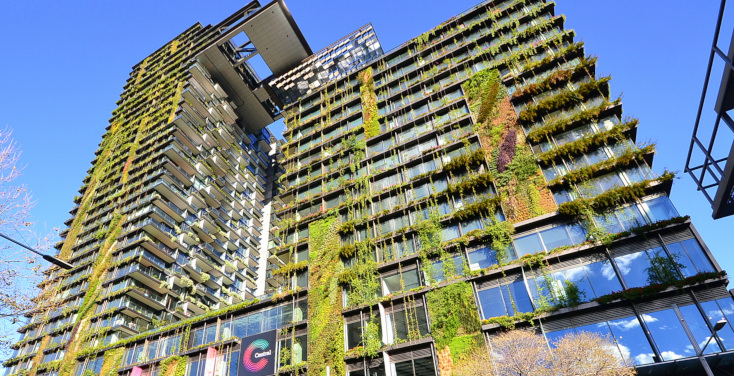Not just in Australia …
Backed by research and multiple benefits, green infrastructure is not hard to sell. In Australia, these nature-based systems are known as Water Sensitive Urban Designs (WSUDs) and are starting to be widely implemented across the country, especially in Melbourne.
In Europe, these are “nature-based solutions” and are heavily used for rain water capturing, while in the US they are named Low Impact Developments (LIDs), a popular solution for road run-off treatment and urban cooling.
China has recently launched the “Sponge City” concept, which relies on green technology to hold water during wet periods so that you can “squeeze a sponge” during dry periods and use water where it’s needed.
Adoption of green technologies is happening around the world and this concept is not new. Recent technological advances in the development of green water treatment technology have popularised this sustainable water management practice, but two new issues arose.
For a long time, green technology development was the primary concern of engineers. The pendulum has recently shifted towards delivering widespread adoption, with a focus on planning and regulatory issues.
While these are crucial for the roll-out of green technologies, they shouldn’t be seen in isolation. We need to balance this pendulum and have technology development and system adoption happening hand-in-hand.
The green technology systems are not robust enough for unrestricted implementation, and we need coordinated effort and investment from researchers, state governments, councils, water corporations, developers and households to achieve desired results.
Keep in mind that these are nature-based systems which are specific to different climates, soils and water conditions. They can’t be mass-produced.
This leads me to a second issue which is even more concerning. Some companies have started to “blindly” use green technology guidelines developed in one climatic region in other, incompatible regions.
This can be seen in countries like China, where there are significant investments in this field and business are selling Australian designs for a quick profit.
However, this leads to system underperformance and, in some cases, plant death, which gives rain gardens and other green technologies a negative reputation. For the best results, these systems need to be tailored, tested and validated to local conditions.
What does the future hold?
Now we all must work towards more research-industry partnerships as well as to educate the public about nature-based water treatment systems. Engineers should be working with urban planners, landscape architects and ecologists to build capacity for wide-spread implementation of water and life-saving greenery throughout our cities.
So, are we using all the benefits that nature provides? No, not yet, but let’s keep working towards that goal.









